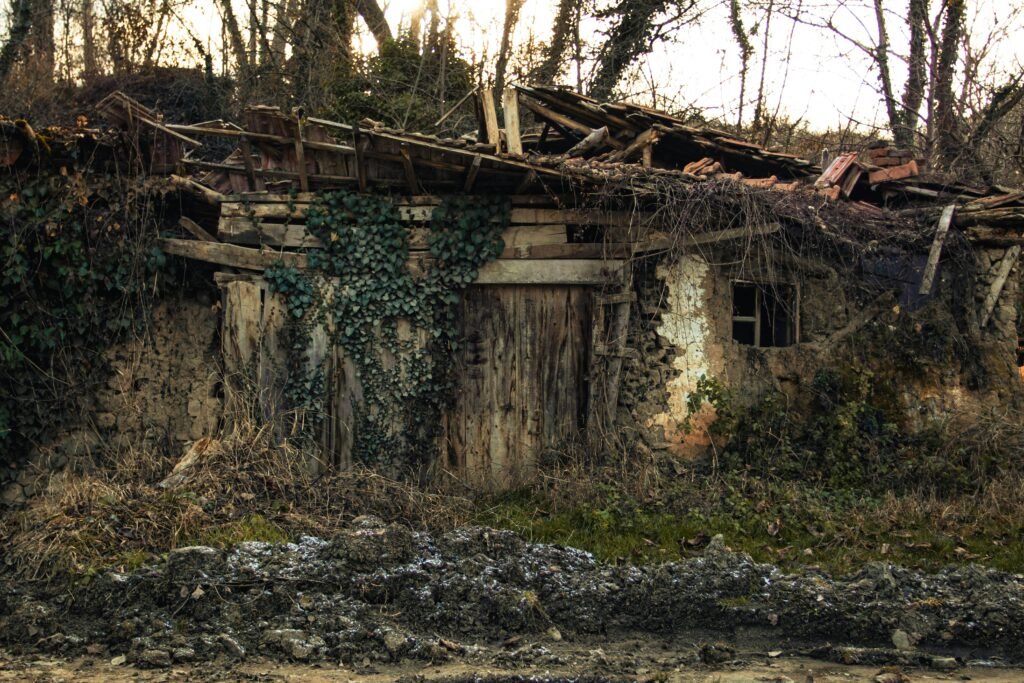You’re about to embark on a fascinating journey into the world of crate production, where the use of various types of wood plays a vital role. From rich and elegant mahogany to sturdy and durable pine, this article will take you on a delightful exploration of the diverse woods utilized in crate making. Prepare to discover the unique characteristics and benefits each wood brings to this essential industry. Whether you’re a wood enthusiast or simply curious about the craftsmanship behind crate production, get ready to be captivated by the wide array of timber options available in this fascinating realm.
Softwood
Pine
Pine wood is one of the most popular choices for crate making due to its availability, affordability, and versatility. It is known for its light color and straight grain, giving it a clean and uniform appearance. Pine is relatively soft, making it easy to work with and less prone to splitting. It can withstand moderate pressure and is suitable for many types of crates, including storage crates and shipping crates.
Spruce
Spruce wood is another common softwood used in crate production. It is similar to pine in terms of its light color and straight grain, but it tends to have a slightly finer texture. Spruce wood is lightweight and easy to handle, making it a preferred choice for crates that need to be lifted and transported frequently. Its strength and durability make it suitable for heavy-duty crates, such as those used for transporting machinery or equipment.
Cedar
Cedar wood is prized for its natural resistance to decay, insects, and rot, making it an excellent choice for outdoor crates, such as garden crates or storage crates placed in humid environments. It has a distinct aromatic scent and a beautiful reddish-brown tone. Cedar wood is also known for its dimensional stability, meaning it is less likely to warp or shrink. Although cedar wood is slightly more expensive than pine or spruce, its exceptional durability and unique qualities make it a worthwhile investment.
Fir
Fir wood is another popular softwood used in crate making. It is known for its strength and stability, making it suitable for heavy-duty crates that require load-bearing capabilities. Fir wood has a light color with a subtle reddish hue and a straight grain that adds to its aesthetic appeal. It is relatively lightweight and easy to work with, making it a versatile choice for various crate designs and applications.
Hardwood
Oak
Oak wood is one of the most commonly used hardwoods in crate production due to its strength, durability, and beautiful grain patterns. It is known for its light to medium brown color, which can vary depending on the species. Oak wood is highly resistant to wear and tear, making it suitable for crates that need to withstand rough handling or heavy loads. Its natural beauty and versatility also make it a popular choice for customized or decorative crates.
Maple
Maple wood is prized for its attractive light color and fine, even grain. It is known for its hardness and durability, making it an excellent choice for crates that require extra strength, such as those used for shipping delicate or valuable items. Maple wood is also highly resistant to impact and wear, ensuring that crates made from this hardwood can endure demanding conditions. Its smooth surface and excellent finishing capabilities make it ideal for crates that require a sleek and polished look.
Cherry
Cherry wood is cherished for its rich reddish-brown color that deepens with age and exposure to light. It has a smooth texture and a fine, straight grain, giving it an elegant and luxurious appearance. Cherry wood is moderately hard and strong, making it suitable for crates that need to withstand moderate impacts or loads. Its natural beauty and warm tones make it a popular choice for high-end or custom-made crates.
Walnut
Walnut wood is highly prized for its dark brown color, often with a purplish hue and a striking grain pattern. It is known for its hardness, stability, and resistance to decay and pests. Walnut wood is exceptionally durable and can withstand heavy loads and rough handling, making it a top choice for crates that require maximum strength and protection. Its rich, natural beauty and unique character make it a favorite among those seeking crates that make a statement.

This image is property of images.pexels.com.
Exotic Woods
Mahogany
Mahogany wood is renowned for its deep reddish-brown color, which can vary slightly depending on the species. It has a straight grain with a medium to coarse texture, giving it an exquisite and luxurious appearance. Mahogany wood is known for its durability, stability, and resistance to moisture and pest infestation. It is a popular choice for high-end and custom-made crates that require a touch of elegance and sophistication.
Teak
Teak wood is highly sought after for its exceptional durability, natural resistance to moisture, and stunning golden to dark brown color. It has a straight grain and a smooth texture, showcasing its natural beauty. Teak wood is renowned for its strength and stability, making it an ideal choice for crates that will be exposed to harsh environments or frequent handling. Its resistance to rotting, warping, and shrinking also makes it suitable for outdoor crates.
Rosewood
Rosewood is prized for its stunning appearance, with colors ranging from reddish-brown to dark purple. It has a straight grain with a fine texture, giving it a smooth and polished finish. Rosewood is known for its durability and resistance to decay and insects. It is often used in high-quality and decorative crates that require a touch of luxury and sophistication. Due to its scarcity and high demand, rosewood is generally more expensive than other woods.
Ebony
Ebony wood is highly valued for its jet-black color and rich, smooth texture. It has a tight grain and a fine, even texture, making it incredibly dense and heavy. Ebony wood is known for its strength, durability, and resistance to moisture and pests. It is a popular choice for crates that need to withstand extreme conditions or rough handling. Its striking appearance and rarity make it a luxurious option for high-end crates or display cases.
Engineered Wood
Plywood
Plywood is a type of engineered wood made by bonding multiple thin layers of wood veneers together with adhesive. This construction method enhances its strength and stability, making it a reliable choice for crates that require structural integrity. Plywood is versatile and available in various grades and thicknesses, making it suitable for both lightweight and heavy-duty crates. Its consistent strength, durability, and affordability make it a popular option in crate production.
Particleboard
Particleboard, also known as chipboard, is made by compressing wood particles with resin and adhesive. While it is not as strong as solid wood or plywood, particleboard is widely used in crate making for its affordability, accessibility, and versatility. It is suitable for lightweight crates or internal components where load-bearing capabilities are not the primary concern. Particleboard is easy to work with and offers a smooth and even surface for finishing.
Medium Density Fiberboard
Medium Density Fiberboard (MDF) is another type of engineered wood made from wood fibers, resin, and adhesive. It is denser and stronger than particleboard, offering increased durability and stability. MDF is commonly used in crate production for its uniform density and smooth surface, making it suitable for crates that require superior finishing or decorative elements. Its affordability and availability make it a popular choice for a wide range of crate applications.

This image is property of images.pexels.com.
Recycled Wood
Reclaimed Barnwood
Reclaimed barnwood refers to wood salvaged from old barns or other structures that are no longer in use. This wood often retains its rustic appearance, showcasing weathered textures, nail holes, and unique character. Reclaimed barnwood is valued for its environmental sustainability and unique aesthetic, making it an attractive choice for eco-conscious crate makers or those seeking a vintage or rustic look.
Pallet Wood
Pallet wood is derived from the planks used in pallet construction. While it may not be as visually appealing as other wood types, pallet wood is highly accessible and cost-effective. It is commonly used in crate making for its durability and utility, as it can withstand heavy loads and rough handling. Pallet wood is often used for industrial or practical crates where aesthetics are not the primary concern. Its affordability and availability make it a popular choice for large-scale crate production.
Treated Wood
Pressure Treated Wood
Pressure treated wood undergoes a process where preservatives are forced deep into the wood under high pressure, enhancing its resistance to decay, insects, and rot. This treatment increases the lifespan of the wood and makes it suitable for outdoor or moisture-exposed crates. Pressure treated wood is often used in construction sites or industrial applications where durability and longevity are crucial.
Fire Retardant Treated Wood
Fire retardant treated wood is specially treated with chemicals that delay or prevent the spread of fire. This treatment increases the wood’s fire resistance properties, making it suitable for crates that require enhanced fire safety measures. Fire retardant treated wood is commonly used in industries where fire protection is crucial, such as chemical storage or transportation.

This image is property of images.pexels.com.
Wood Grades
Select Grade
Select grade wood is characterized by its high quality and minimal defects. It has a clean appearance, straight grain, and minimal color variation. Select grade wood is often used in fine woodworking or customized crates where aesthetics and smooth surfaces are essential.
Common Grade
Common grade wood may have more visible defects, such as knots, mineral streaks, or color variation. Despite these imperfections, it still retains its structural integrity and suitability for crate making. Common grade wood is popular for crates that prioritize functionality and cost-effectiveness over aesthetics.
Cabinet Grade
Cabinet grade wood is the highest quality grade available, reserved for fine cabinetry and high-end furniture. It is chosen for its exceptional appearance, superior stability, and minimal defects. Cabinet grade wood is used in premium crates that demand the utmost quality and craftsmanship.
Sustainable Wood
FSC Certified Wood
FSC (Forest Stewardship Council) certified wood is sourced from responsibly managed forests that meet stringent environmental and social standards. This certification ensures that the wood comes from sustainable and traceable sources, promoting the conservation of forests and biodiversity. FSC certified wood is an excellent option for environmentally conscious crate makers or those seeking to promote sustainable practices.
Reclaimed Wood
Reclaimed wood refers to wood salvaged from old buildings, furniture, or other structures. By repurposing and reusing this wood, it helps reduce the demand for new timber and minimizes waste. Reclaimed wood carries a unique history and character, making it a popular choice for those seeking eco-friendly and one-of-a-kind crates. It embodies the principles of sustainable design and craftsmanship.
Wood Finishes
Natural
Natural wood finish involves leaving the wood’s surface untreated or applying a clear protective coating that enhances its natural color and grain. This finish allows the wood’s intrinsic beauty to shine through, giving the crate a timeless and organic look. Natural wood finishes are popular for crates that aim to showcase the unique characteristics of the wood.
Stained
Stained wood finishes involve applying a pigmented solution to alter the wood’s color while still allowing the grain to show through. Stains provide a wide range of color options, allowing crate makers to customize their crates to suit specific aesthetics or design preferences. Stained finishes are commonly used in decorative or customized crates.
Painted
Painted wood finishes involve applying a layer of paint to completely cover the wood’s surface. This finish allows for unlimited color options, making it ideal for crates that need to match a specific color scheme or brand identity. Painted finishes provide a smooth and uniform appearance, adding a touch of vibrancy or sophistication to the crate.
Distressed
Distressed wood finishes involve intentionally creating an aged or weathered look on the wood’s surface. This finish adds character and a sense of antiquity to the crate, making it appear well-worn or vintage. Distressed finishes are often used in rustic or shabby-chic-style crates that aim to evoke a sense of nostalgia or history.
Wood Characteristics
Grain Pattern
The grain pattern refers to the unique arrangement and appearance of the wood fibers. Different wood species have distinct grain patterns, ranging from straight, tight grains to more pronounced patterns with swirls or waves. Grain patterns lend character to the crate and can be accentuated or highlighted through finishing techniques. Crate makers often consider grain patterns when selecting wood for specific design aesthetics or desired visual effects.
Color Variation
Wood color can vary significantly based on the species, age, and natural characteristics of the wood. Some woods exhibit relatively uniform color, while others display striking color variations, such as streaks or contrasts. Color variations add visual interest and uniqueness to the crate, allowing for endless design possibilities. Crate makers may select wood species with specific color variations to achieve desired effects or complement a particular aesthetic.
Durability
The durability of wood refers to its ability to withstand wear, impacts, decay, pests, and other environmental factors. Some woods, such as oak or teak, are known for their exceptional durability and longevity, making them suitable for crates that need to endure heavy use or harsh conditions. Durability is an essential consideration in crate making, ensuring that the crate can adequately protect its contents and withstand the rigors of transportation or storage.
In conclusion, the wide variety of woods used in crate production offers crate makers a range of options to suit their specific needs, preferences, and design considerations. From softwoods like pine and cedar to hardwoods like oak and walnut, each wood type brings its own unique characteristics and advantages. The choice of wood can impact the crate’s strength, appearance, durability, and overall suitability for various applications. Understanding the properties and features of different wood types allows crate makers to create functional, beautiful, and sustainable crates that meet the diverse needs of their customers.
